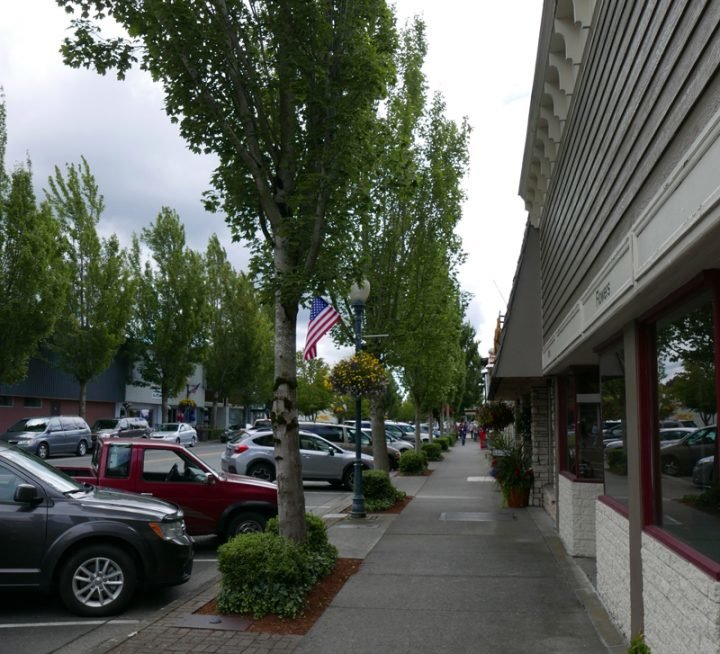
By Oliver Lazenby
Street trees have a sweet spot in their life cycle. Too young and their roots don’t go deep enough to survive a drought and they don’t reach the full potential of their psychological, economic and environmental benefits. Too old and they outgrow their space and begin to damage surrounding pavement.
According to a recent study, the trees on Peace Portal Drive are in that sweet spot, but they won’t be for long and some are already starting to damage sidewalks. The study, funded by a Department of Natural Resources grant and performed by Urban Forestry Services, Inc., of Mount Vernon, looked at 110 trees from Cherry Street north.
The arborists who conducted the study recommended maintaining the trees as long as possible, even though nearly half the trees – mostly Armstrong maples with some Katsura trees on the corners – are already pushing up the sidewalk.
“Most of the trees appear healthy and vigorous,” the study stated. “As they decline or cause excessive infrastructure damage, they can be removed.”
Presented with this information at its July 11 meeting, Blaine City Council directed city staff to write a 15-year plan for those trees. Ideally, trees will be removed and replanted in intervals that don’t leave chunks of the street devoid of trees, councilmembers said.
Staff won’t begin developing a plan until after the city passes its 2017 budget, and the planning process will include public outreach, said public works director Ravyn Whitewolf.
Mayor Harry Robinson said the trees should be maintained in a way that keeps maintenance costs consistent from year to year.
“Would it be possible to work out a plan for those trees, decide what you want them to look like, and every year take out some?” he said. “That would give us a yearly budget number we can live with.”
The report recommended pruning both branches and roots to keep the current trees as long as possible. The city should also continue shaving down high edges of heaving and buckling sidewalk panels, the report said.
The study also outlined some more expensive management options, including planting new trees and installing underground root retention systems, replacing sidewalks with flexible rubber tiles, or removing pavement entirely to allow tree roots more room to grow.
Some of those options would reduce space for parking or sidewalk use, and every management option comes with costs. According to the report, doing nothing will cause the most damage to the sidewalk and road, and may lead to the trees being removed all at once later.
“Street trees are living things, and that’s key to managing them,” said Michael Jones, community development director.
Cutting all the trees down and going treeless might be the cheapest long-term option, but there’s a reason street trees are ubiquitous in cities and towns around the world, Jones said.
Trees make a measurable impact on air and water quality and the shade they cast reduces energy costs for nearby businesses. Beyond that, areas with more trees tend to have lower crime rates, higher property values and higher retail sales, Jones said.
“People tend to linger longer in areas with trees,” Jones said.
In 2014, before the study, city staff went door to door to get opinions from property owners on Peace Portal Drive. Most property owners liked the trees but thought they needed some management, Jones said.
Potential grants may allow the city to study and implement citywide street tree management in the future. Right now, Peace Portal Drive is the highest priority because it has some of the oldest trees and most sidewalk issues in the city.
Urban Forestry Services’ full report is available on the city’s website.
Comments
No comments on this item Please log in to comment by clicking here